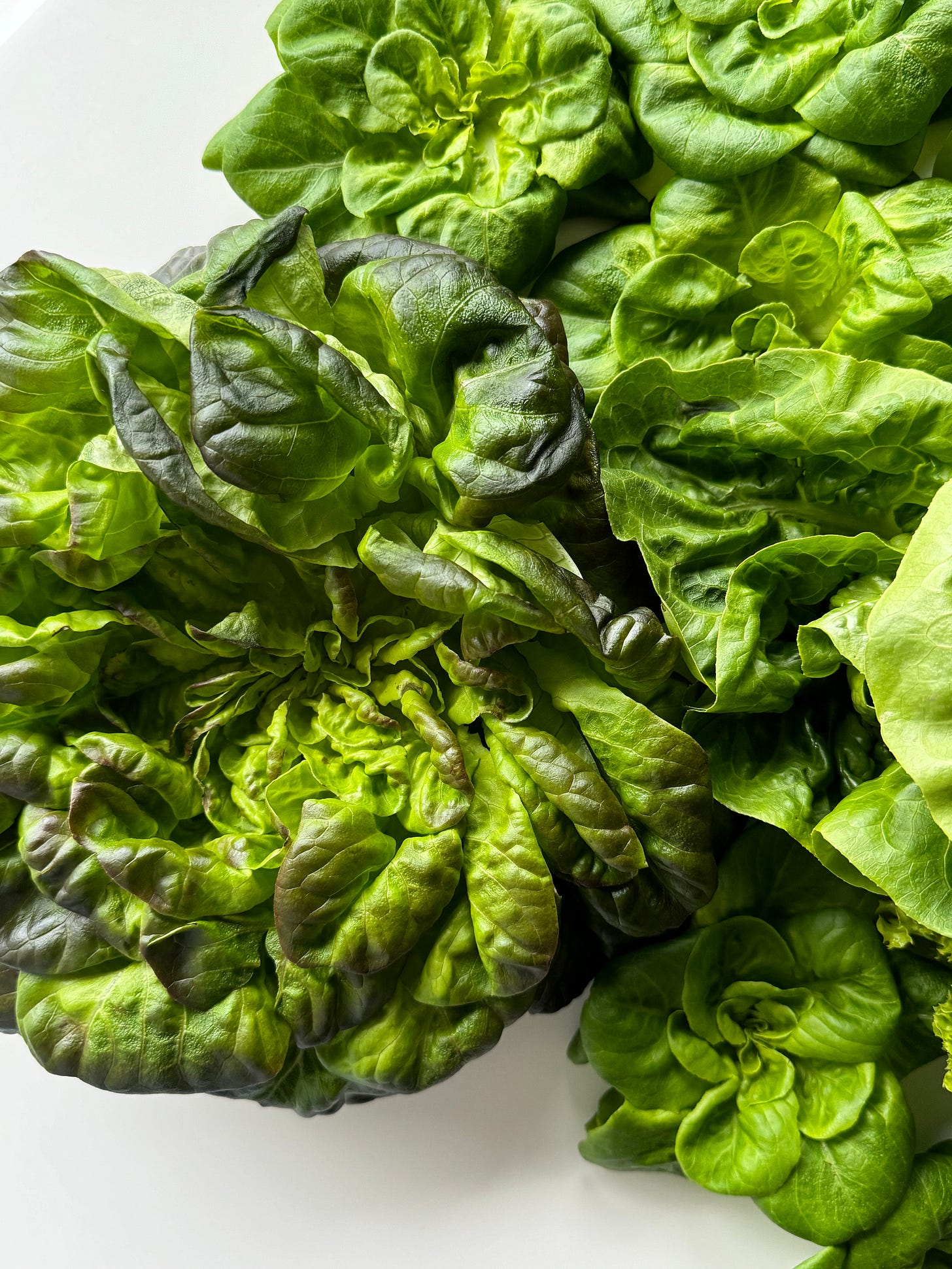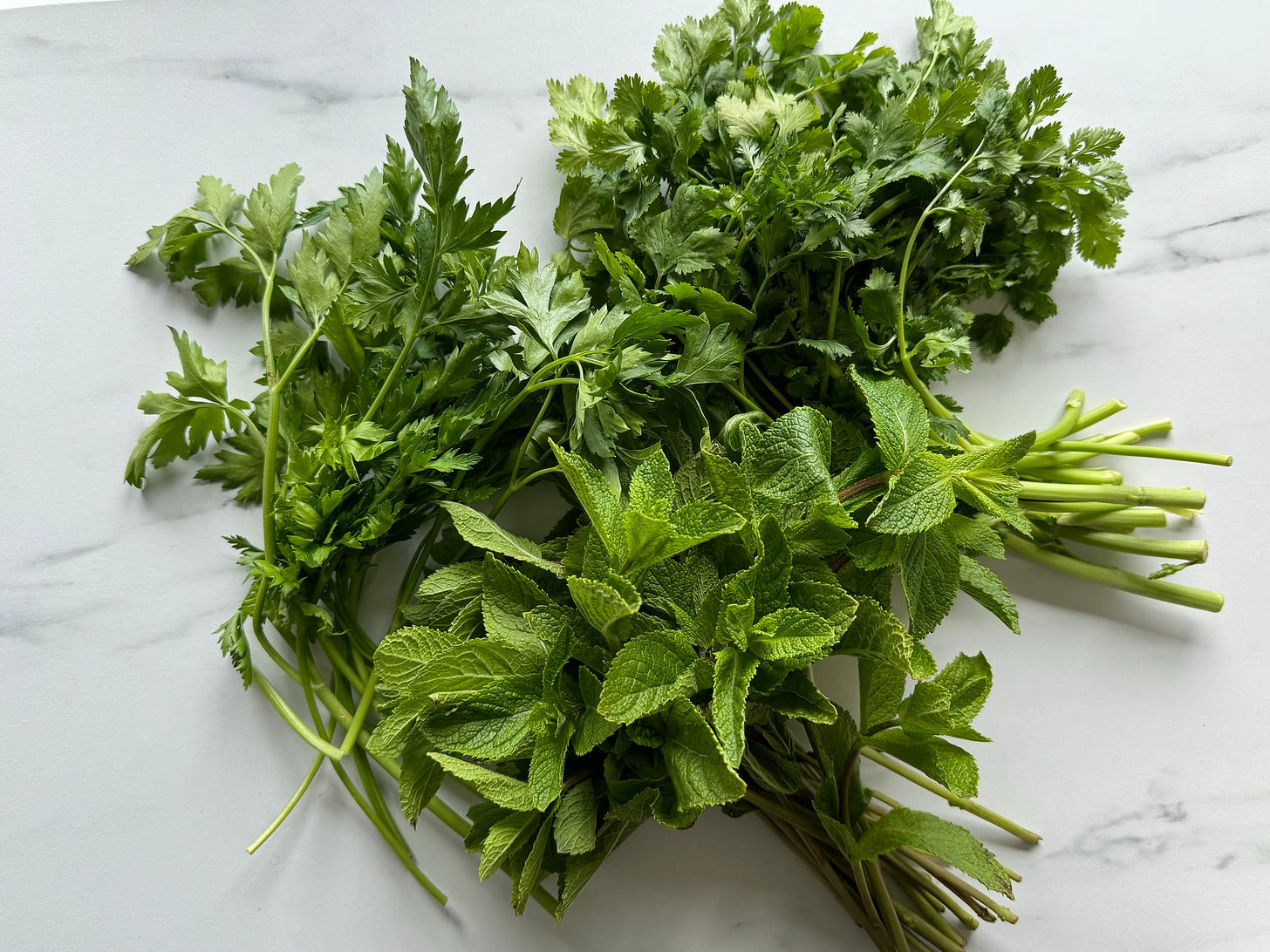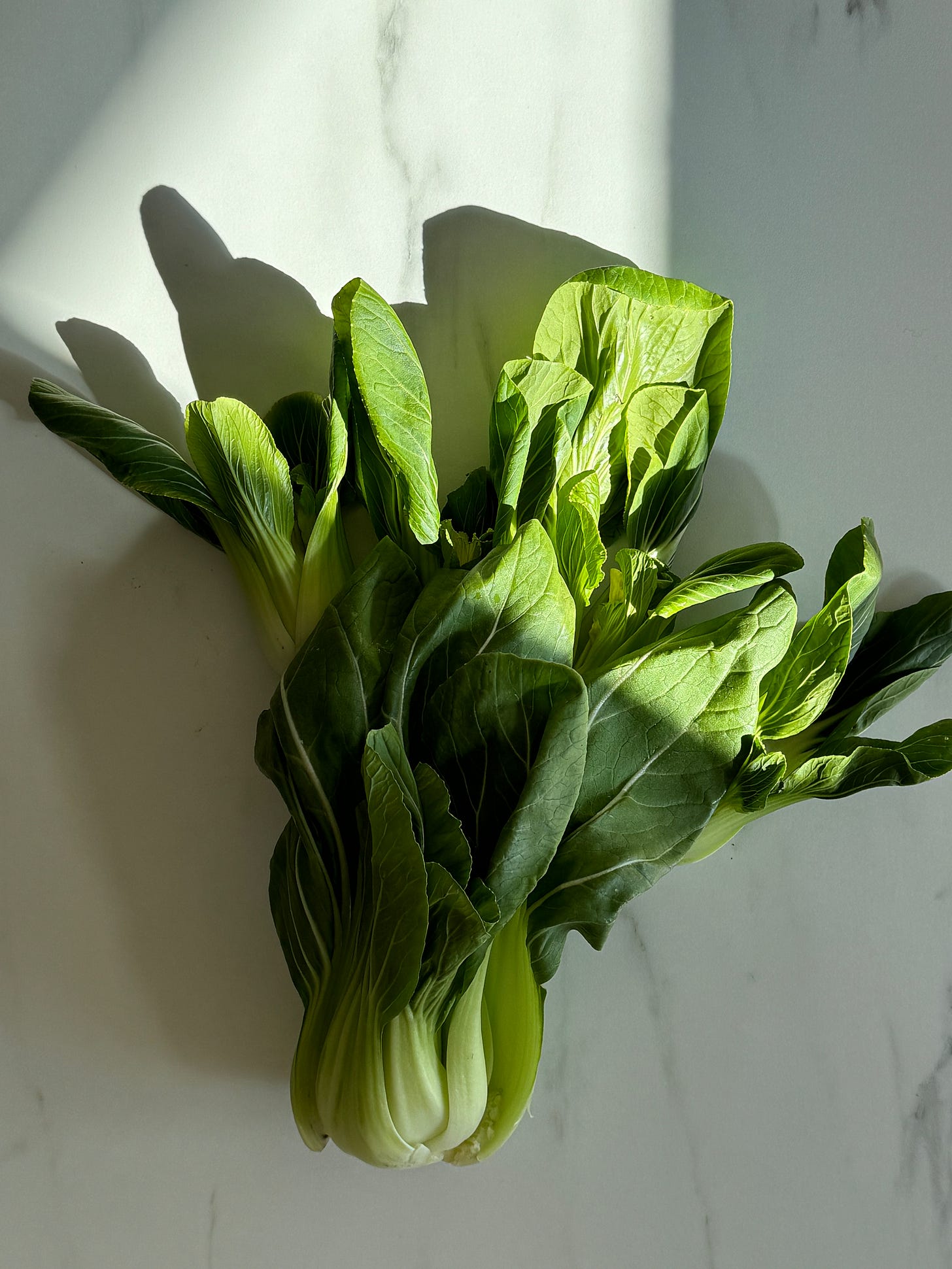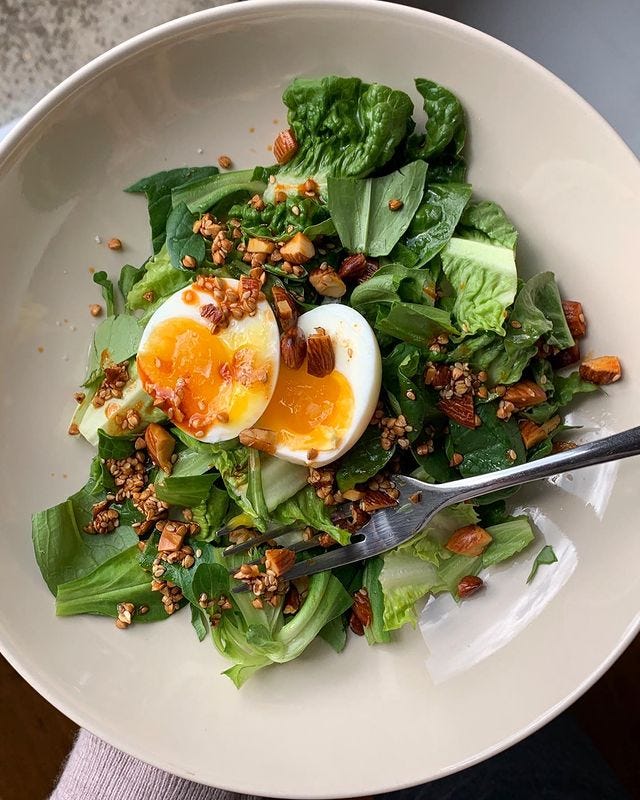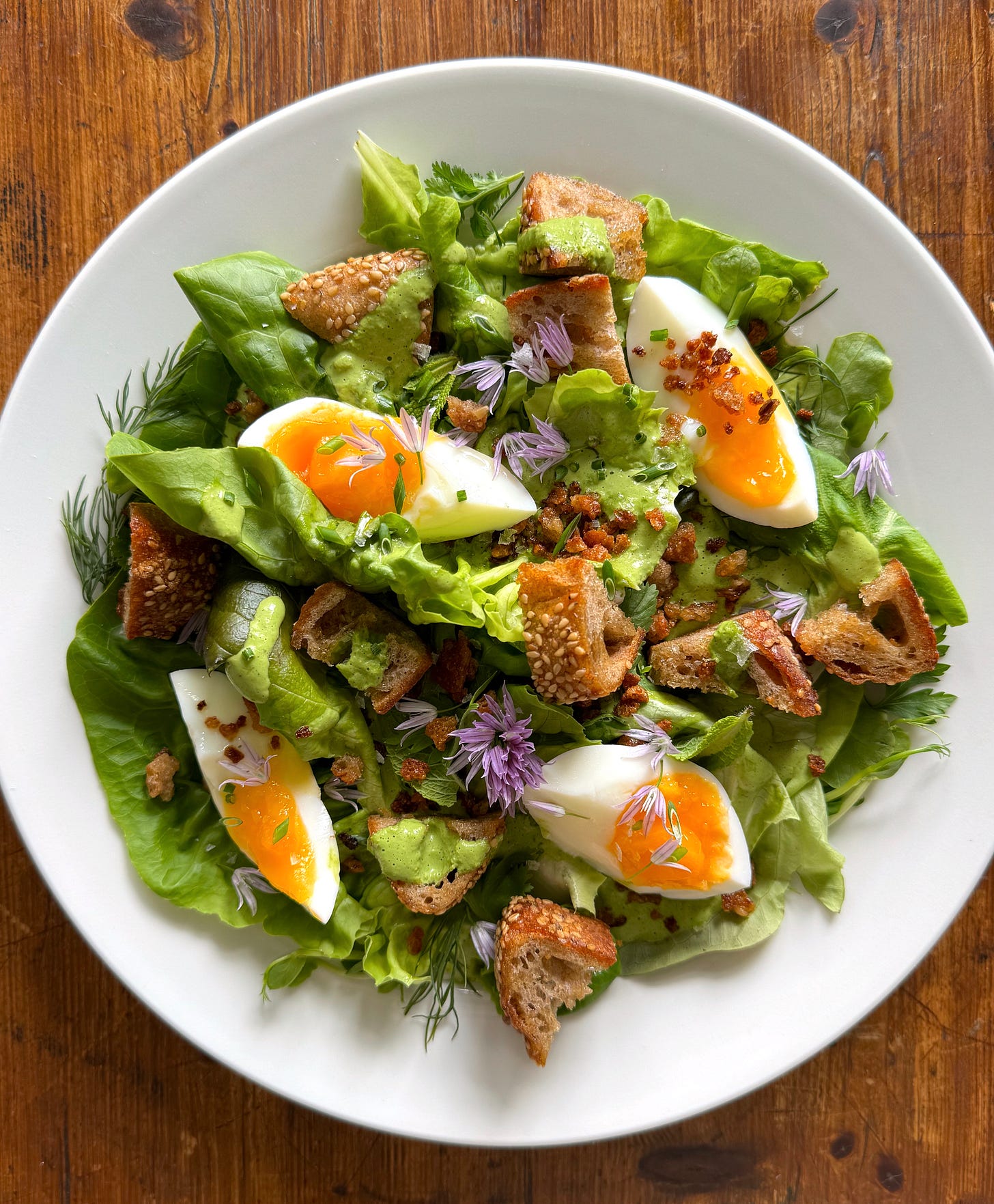👋+: Green Herb Dressing & Spring Soba Salad
feasting on delicate greens + how to organise a fridge
Allô! 👋
Welcome (back) to seasonal sundays, where every week we take a closer peek at produce at its peak — with a short introduction, at least one recipe, and a (sometimes related) cooking Q&A. Thank you for reading! If you’d like to invite a friend to subscribe, annual subscriptions are currently discounted for a limited time.
Happy Sunday! I hope you’re all having good weekends so far (if not, I send hugs!!).
Clovers are flowering, wild strawberries are ripening, evenings are getting gloriously long — late spring is in full swing! To make the most of things before the weather really gets too warm, this week we’re talking tender, leafy, herbs and greens.
LEAFY GREEN & TENDER HERB SEASONALITY
Lettuce, like spinach (a relative of quinoa!), arugula, and bok choy (both from the mustardy brassica family), thrives when temperatures are somewhere between cool (but not too cool) and warm (but not too warm).
Despite being available year-round in supermarkets, lettuces are generally at their best in mid- to late spring and in early summer. Once the scorching heat of midsummer’s lengthy days arrives, most lettuces tend to bolt (i.e. send up a flowering head) and their leaves becomes too bitter to eat. The same can be said of bok choy.
If you’re now thinking that your one and only best time to enjoy these tender leafy greens is already nearly over, with no hopes of having another in-season salad until next spring, do not fret: once temperatures and day lengths drop again in late summer and early autumn, a second window of harvesting crops up, and these tender leafy greens return to peak season market once more (they are a bit like artichokes in that way).
Tender herbs like chives, tarragon, coriander, dill, lovage, and parsley are very similar to leafy greens in that they first appear in the cool (but not too cool) spring months and are later also harvested in the warm (but not too warm) days of late summer and early fall.
While these herbs are also prone to bolting, the good news is that some of them can have their season stretched all through high summer thanks to some clever gardening techniques — such as pruning flower heads before they go to seed, giving herbs extra shade, or simply sowing extra seeds later in the growing season (often part of a strategy called succession planting) . In other words, tender herb season is here ‘til fall!
LETTUCE, BOK CHOY & TENDER HERB VARIETIES
It’s easy to think that there are only a few lettuces, one bok choy, and maybe just a couple of different tender herbs varieties, but the truth is that there are plenty.
When shopping for lettuces in late spring and early summer, look for varieties such as: Bibb (or Butter lettuce), Iceberg, Lollo, Batavia (a variety resistant to summer heat!), Romaine, Little Gem (AKA baby romaine), and Oak Leaf, among many others.
Bok choys also come in numerous varieties, but outside of China, those most commonly found in Europe and North America are Shanghai bok choy (with smooth oval leaves and pale green stems — see photo below), dwarf Canton bok choys (small, with white stems and dark green leaves), Tawainese bok choy (with paler leaves and a milder taste), and white bok choy (large, with white stems).
When it comes to tender herbs, I could go on forever listing different varieties — so I won’t. Just know that there is more to parsley than curly or flat-leaf, more to mint than just spear- or pepper-, more to dill than the Bouquet, Como, Mammoth and Delikat varieties most familiar to those with an herb garden.
Diversity is the spice of life so, if you can, do seek out and try new varieties of foods already familiar to you. The surprise that comes with experiencing new-yet-recognisable tastes, scents, textures, and appearances is never not worth the reward.
SHOPPING & STORAGE
For both tender leaves and tender herbs, you’ll want to look for vibrant green leaves and sturdy stems. Any yellowing, wilting, browning or sliminess will be indicative of a plant past its prime. Note, however, that if the leaves are only looking a little tired but otherwise vigorous, a short refresh in ice water can be all that they need to perk them right back into shape.
For quick and easy use, wash and dry your leaves well before storing them in an airtight container, well away from the cold back of the refrigerator. (Tender herbs benefit from also being loosely wrapped in a barely damp cloth, but lettuces generally do fine without.) Kept this way, you should expect to have fresh greens for around five (and up to ten) days.
•••
This week’s issue features two recipes that use tender leaves and tender herbs in combination. Both are intended to help you use up (instead of toss out) an abundant quantity of greens, though if you have access to a garden where you can pick just the right amount, they are of course still a treat to prepare and enjoy without fear of food waste.
If you get bored of salad, extra lettuce can be grilled, made into soup, or used as cups or wraps for savoury fillings. Meanwhile, other ways to use up your herbs could be to make very green falafel or kuku sabzi, or simply to preserve them for another day.
a very green salad dressing 🥗
There are a lot of bright green herb dressing recipes out there. Some include anchovies, others sour cream, others still use avocado. Mine contains none of the above.
INGREDIENTS
makes enough to generously dress two large salads
Keep reading with a 7-day free trial
Subscribe to good food at home to keep reading this post and get 7 days of free access to the full post archives.






